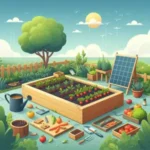Creating a vibrant garden can be one of life’s most rewarding experiences, but for many, the time and effort required to maintain it can feel overwhelming.
Enter low-maintenance plants—the perfect solution for busy individuals who yearn to enjoy the beauty of nature without the constant labor. Whether you’re a seasoned gardener looking to simplify your routine or a novice hoping to cultivate a lush outdoor space with minimal fuss, this ultimate guide will introduce you to a selection of resilient plants that thrive with little care. From drought-tolerant succulents to hardy perennials that bloom year after year, we’ll explore the most forgiving flora that suits any climate and garden style. So, roll up your sleeves and get ready to transform your outdoor oasis into a low-maintenance paradise that allows you to savor your weekends instead of spending them in the garden!
1. Introduction to Low-Maintenance Gardening
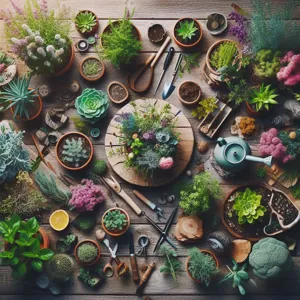
Gardening can be an incredibly rewarding hobby, providing a sanctuary of tranquility and beauty right in your own backyard. However, the often time-consuming tasks of planting, watering, pruning, and weeding can become overwhelming, especially for those with busy schedules or limited gardening experience. This is where low-maintenance gardening comes into play—a practical solution that allows you to enjoy the benefits of a lush garden without the stress and extensive labor typically associated with traditional gardening.
Low-maintenance gardening focuses on selecting plants that thrive with minimal intervention, making it an ideal choice for novice gardeners or those looking to simplify their gardening routine. These plants are generally hardy, drought-resistant, and less susceptible to pests and diseases, allowing them to flourish with minimal care. By choosing the right varieties, you can create a vibrant, sustainable garden that requires less time and effort, enabling you to spend more time enjoying the fruits of your labor rather than toiling in the dirt.
In this guide, we’ll explore the best low-maintenance plants for your garden, providing you with insights on how to create a beautiful, hassle-free outdoor space. Whether you’re aiming for a serene retreat, a colorful flower bed, or a functional vegetable patch, low-maintenance gardening can help you achieve your vision while keeping your workload light. Let’s dig into the world of effortless gardening and discover the perfect plants that will thrive with ease!
2. Benefits of Choosing Low-Maintenance Plants
When it comes to gardening, the allure of vibrant blooms and lush greenery can sometimes be overshadowed by the demands of upkeep. This is where low-maintenance plants step in, offering a plethora of benefits that can transform your gardening experience into one of joy rather than toil.
First and foremost, low-maintenance plants are a boon for busy individuals or those new to gardening. They require less frequent watering, pruning, and fertilization, freeing up your time to enjoy your outdoor space rather than labor over it. Imagine having a garden that flourishes with minimal effort—this is the reality that low-maintenance options can provide. Plants like succulents, ornamental grasses, and native perennials thrive in a variety of conditions, adapting seamlessly to their environment while demanding very little from you.
Moreover, these plants are often more resilient to pests and diseases, meaning less time spent battling unwanted invaders. This resilience not only leads to a healthier garden but also reduces the need for chemical treatments, making your garden an eco-friendlier space. As a result, you can cultivate a thriving ecosystem that attracts beneficial insects and pollinators, enhancing the overall biodiversity of your garden.
Low-maintenance plants also contribute to cost savings. With their hardy nature, you’ll find yourself purchasing fewer replacement plants and spending less on gardening supplies. Additionally, their drought-resistant qualities mean lower water bills, particularly in regions where water conservation is a priority.
Finally, the aesthetic appeal of low-maintenance plants cannot be overlooked. Many of these varieties boast stunning foliage and striking flowers that can provide year-round interest, ensuring that your garden remains beautiful without the constant effort. By choosing low-maintenance plants, you can create a stunning and serene outdoor oasis that complements your lifestyle, allowing you to relax and enjoy the fruits of your labor—without the labor.
3. Understanding Your Garden’s Conditions
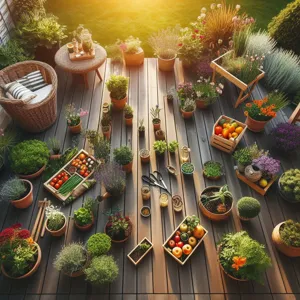
Understanding your garden’s conditions is the cornerstone of cultivating a thriving low-maintenance garden. Before diving into the selection of plants, take a moment to assess the unique environment of your outdoor space.
Begin by observing the sunlight throughout the day. Is your garden drenched in bright, direct sunlight for most of the day, or is it shaded by nearby trees and structures? Plants vary greatly in their light requirements; for instance, succulents and many herbs thrive in full sun, while ferns and certain shade-loving perennials flourish in cooler, dimly lit spots.
Next, consider the soil type and drainage. Is your soil sandy and quick to drain, or is it heavy clay that retains moisture? Conduct a simple soil test by taking a handful of soil and squeezing it. If it crumbles easily, you likely have sandy soil; if it holds its shape and feels sticky, you might be dealing with clay. Some low-maintenance plants, such as lavender and sedums, prefer well-draining soil, while others, like astilbes and hostas, appreciate the moisture retention of clay.
Also, take note of your climate zone. Understanding your local climate, including average rainfall, temperature fluctuations, and seasonal changes, will help you choose plants that can thrive with minimal intervention. Native plants are often the best candidates for low-maintenance gardens, as they are adapted to your region’s specific conditions and require less water and care once established.
Lastly, remember to consider your garden’s exposure to wind and potential pests. Windy areas may benefit from hardy, wind-resistant plants, while gardens prone to insects might require the selection of pest-repellent varieties. By taking these factors into account, you can create a harmonious garden that not only enhances your outdoor space but also requires minimal effort to maintain. Understanding your garden’s conditions is your blueprint for selecting the right low-maintenance plants that will flourish effortlessly year after year.
4. Top Low-Maintenance Perennial Flowers
When it comes to creating a vibrant garden that requires minimal upkeep, perennial flowers are a gardener’s best friend. These hardy beauties return year after year, offering a burst of color without the need for constant attention. Here are some top low-maintenance perennial flowers that can transform your garden into a stunning oasis with little effort.
**1. Daylilies (Hemerocallis)**
Daylilies are a favorite among gardeners for their resilience and adaptability. These cheerful blooms come in a myriad of colors and are incredibly easy to grow, thriving in various soil types and light conditions. Once established, they require little more than occasional watering and pruning, making them perfect for those who want a lush garden without the hassle.
**2. Sedum (Sedum spp.)**
Sedums, or stonecrops, are succulent perennials that add unique texture and interest to your garden. With their fleshy leaves and star-shaped flowers, these plants are drought-tolerant and thrive in poor soil—ideal for rock gardens or borders. They require minimal watering and can withstand hot, sunny conditions, making them a low-maintenance choice for busy gardeners.
**3. Black-eyed Susans (Rudbeckia hirta)**
These iconic yellow flowers are not only stunning but also incredibly resilient. Black-eyed Susans bloom from mid-summer to fall, attracting pollinators and adding a splash of color to any landscape. They thrive in full sun and are drought-resistant once established, requiring very little intervention aside from occasional deadheading to encourage more blooms.
**4. Lavender (Lavandula)**
Known for its soothing scent and beautiful purple blooms, lavender is a perennial herb that thrives in sunny, well-drained soil. Once established, it is incredibly drought-tolerant and requires minimal pruning. Lavender is perfect for adding a touch of elegance to your garden while also attracting bees and butterflies, enhancing the overall ecosystem of your outdoor space.
**5. Coneflower (Echinacea)**
With their striking petals and central cones, coneflowers are a staple in low-maintenance gardens. They are hardy, drought-tolerant, and thrive in poor soil conditions. These flowers bloom from summer to fall, providing long-lasting beauty and attracting a variety of pollinators. The only care they require is occasional deadheading and division every few years to keep them healthy and vigorous.
By incorporating these low-maintenance perennial flowers into your garden, you can enjoy a colorful and vibrant landscape with minimal effort. These resilient plants not only beautify your outdoor space but also provide essential support for local wildlife, all while allowing you to relax and enjoy your garden without the stress of constant upkeep.
5. Best Low-Maintenance Shrubs for Your Garden
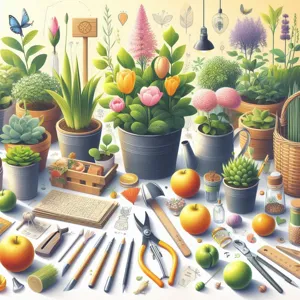
When it comes to creating a beautiful garden without the constant upkeep, choosing the right shrubs is essential. Low-maintenance shrubs not only add structure and greenery to your outdoor space but also provide a perfect backdrop for flowering plants and ornamental grasses. Here are some of the best low-maintenance shrubs that will thrive in your garden with minimal effort.
**1. Boxwood (Buxus spp.)**
Boxwoods are a favorite among gardeners due to their versatility and classic appeal. These evergreen shrubs can be easily shaped into hedges or topiaries, making them perfect for formal gardens. They tolerate a range of soil conditions and are drought-resistant once established. With their rich green foliage, boxwoods provide year-round interest without demanding much attention.
**2. Spirea (Spiraea spp.)**
With an array of species to choose from, spireas are known for their stunning spring blooms and vibrant fall foliage. These deciduous shrubs are incredibly resilient, thriving in various soil types and weather conditions. Most spirea varieties require little pruning and are resistant to pests and diseases, making them an ideal choice for busy gardeners looking to add a splash of color.
**3. Barberry (Berberis spp.)**
Barberries are hardy shrubs that offer both beauty and practicality. Their thorny branches can act as natural barriers, deterring unwanted visitors while providing a striking display of colorful foliage—ranging from deep reds to bright yellows. Barberries are drought-tolerant and require minimal pruning, making them a favorite for low-maintenance landscapes.
**4. Juniper (Juniperus spp.)**
Junipers are an excellent choice for gardeners seeking a low-maintenance evergreen shrub. With their wide variety of shapes, sizes, and colors, these hardy plants can fit into almost any garden design. They thrive in well-drained soil and are remarkably drought-resistant, ensuring they remain steadfast in your garden with little more than a yearly trim.
**5. Hydrangea (Hydrangea spp.)**
While some hydrangeas may need a bit of pruning, many varieties, like the panicle and smooth hydrangeas, are low-maintenance and offer stunning blooms throughout the summer. They can flourish in partial shade and adapt well to different soil types. With their large, showy flowers, hydrangeas provide a breathtaking focal point without the need for constant care.
Incorporating these low-maintenance shrubs into your garden will not only enhance its beauty but also grant you more time to relax and enjoy your outdoor oasis. With the right selection, you can create a stunning landscape that requires minimal upkeep, leaving you with more time to appreciate the simple joys of gardening.
6. Drought-Resistant Plants for Low Water Needs
When it comes to creating a beautiful garden that thrives even in the hottest months, drought-resistant plants are your best allies. These resilient varieties are not only low-maintenance but also remarkably forgiving, allowing you to enjoy a vibrant outdoor space without the constant worry of watering.
Drought-resistant plants have adapted over time to survive in arid conditions, developing deep root systems that access moisture buried beneath the surface. This means they can go longer stretches without water, making them ideal for those who may not have the time or resources for regular irrigation.
Consider incorporating succulents like agave and sedum into your landscape. These fleshy plants store water in their leaves, making them incredibly hardy and visually striking with their unique shapes and colors. Ornamental grasses, such as blue fescue and feather reed grass, also excel in dry conditions while adding texture and movement to your garden.
For a splash of color, look to drought-tolerant flowering plants like echinacea (coneflower) and rudbeckia (black-eyed Susan). These perennials not only bring life to your garden but also attract pollinators, enhancing your garden’s ecosystem.
When choosing your drought-resistant plants, it’s essential to consider your local climate and soil conditions. Native plants, such as lavender or salvia, are often the best choices, as they are naturally adapted to thrive in your environment. By selecting the right plants and grouping them according to their water needs, you can create a stunning, low-water garden that requires minimal upkeep while still providing a lush, inviting space to enjoy.
Incorporating drought-resistant plants into your garden not only conserves water but also promotes sustainability and resilience in your landscape. With these low-water beauties, you can cultivate a thriving garden that stands the test of time, regardless of the weather.
7. Ground Covers That Require Minimal Care
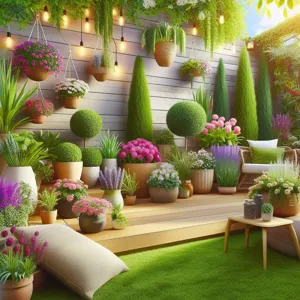
When it comes to creating a beautiful garden that doesn’t demand constant attention, ground covers are your best friend. These hardy plants serve as a living carpet, effortlessly filling in bare patches and suppressing weeds, all while adding texture and color to your outdoor space. Here are a few standout options that require minimal care, allowing you to enjoy a vibrant landscape without the hassle.
**Creeping Thyme** is a fragrant perennial that thrives in sunny spots. Its tiny, purple flowers attract pollinators, making it not only a low-maintenance choice but also a boon for local wildlife. Once established, this resilient plant can tolerate dry conditions, needing little more than the occasional trim to stay tidy.
**Ajuga**, or bugleweed, is another excellent ground cover that flourishes in partial shade. With its striking foliage that ranges from deep green to rich burgundy, Ajuga provides a stunning backdrop for any garden. It also sports charming spikes of blue flowers in spring, adding a pop of color without the need for extensive care. Just be mindful of its spread; a little periodic pruning will keep it in check.
For a more exotic look, consider **Creeping Jenny**. This vibrant ground cover showcases brilliant golden leaves that turn a fiery red in the fall. Thriving in both sun and shade, Creeping Jenny is incredibly forgiving and requires little watering once established. Its trailing habit makes it perfect for cascading over rocks or edging pathways.
Finally, don’t overlook **Sedum** varieties, especially those that are low-growing and mat-forming. These succulent plants are drought-tolerant and come in a range of colors and textures. Their fleshy leaves retain moisture, allowing them to thrive in poor soils with minimal upkeep. Plus, their star-shaped flowers attract beneficial insects while adding visual interest throughout the growing season.
Incorporating these low-maintenance ground covers into your garden will not only enhance its beauty but also free up your time, allowing you to enjoy the outdoors without the constant worry of upkeep. With the right selection, your garden can be a lush, inviting space that requires little more than an occasional glance and a smile.
8. Low-Maintenance Indoor Plants for Home Gardens
Creating a green oasis within your home doesn’t have to involve hours of upkeep. Low-maintenance indoor plants are perfect for anyone looking to add a touch of nature without the hassle of extensive care routines. These resilient beauties not only enhance your living space but also improve air quality and bring a sense of serenity to your surroundings.
One of the star performers of low-maintenance indoor gardening is the **Snake Plant (Sansevieria)**. With its striking upright leaves that come in various shades of green and yellow, the Snake Plant thrives on neglect. It tolerates low light and can go weeks without water, making it an ideal choice for busy individuals or those who might forget to check on their plants regularly.
Another fantastic option is the **ZZ Plant (Zamioculcas zamiifolia)**. Known for its shiny, waxy leaves that reflect light, this plant is virtually indestructible. It can flourish in low-light conditions and requires minimal watering, making it perfect for dimly lit corners of your home. The ZZ Plant serves as both a decorative piece and a conversation starter, thanks to its unique appearance.
For those who appreciate a bit of color, consider the **Pothos (Epipremnum aureum)**. This trailing vine can be placed on a shelf or hung in a basket, with its vibrant green and yellow variegation adding a lively touch to any room. Pothos is exceptionally forgiving; it can adapt to various lighting conditions and will bounce back quickly even after a missed watering session.
Finally, the **Spider Plant (Chlorophytum comosum)** is a classic choice for low-maintenance indoor gardening. Known for its arching leaves and “baby” plant offshoots, the Spider Plant is not only easy to care for but also fun to propagate. It thrives in indirect sunlight and can tolerate a wide range of temperatures, making it suitable for almost any indoor environment.
By incorporating these low-maintenance indoor plants into your home garden, you can enjoy the benefits of greenery without the stress of constant upkeep. Each plant offers unique qualities that can elevate your indoor space, making it a haven of tranquility and beauty. Whether you’re a seasoned plant parent or a novice gardener, these resilient companions can thrive alongside you, adding life and vibrancy to your everyday surroundings.
9. How to Create a Low-Maintenance Landscape Design
Creating a low-maintenance landscape design is an art that balances beauty with practicality, allowing you to enjoy your garden without the constant upkeep. The first step in this process is to assess your space and understand the climate, soil type, and sunlight exposure in your garden. This knowledge will guide you in selecting plants that thrive in your specific conditions while requiring minimal intervention.
Start by incorporating native plants, as they are naturally adapted to your local environment and typically demand less water and care once established. These hardy plants often attract local wildlife and promote biodiversity, adding vibrancy to your landscape. Consider drought-resistant species such as lavender, sedum, or ornamental grasses that not only add texture but also bloom with minimal irrigation.
Next, think about the layout of your garden. Group plants with similar watering and light needs together to simplify your care routine. Use mulch generously around your plants to suppress weeds, retain moisture, and reduce the need for frequent watering. A well-designed hardscape, including pathways, patios, and retaining walls, can also minimize the amount of lawn space that requires mowing and maintenance.
Incorporating evergreen shrubs and perennials can provide structure and color year-round, ensuring that your landscape remains visually appealing in every season. Additionally, consider adding focal points such as ornamental rocks, garden sculptures, or low-maintenance water features that require little upkeep while enhancing the aesthetic appeal of your garden.
Finally, don’t forget the power of planning. Creating a garden layout that considers the growth habits and spacing of your chosen plants will help prevent overcrowding and the need for constant pruning. By thoughtfully designing your landscape with low-maintenance principles in mind, you’ll cultivate a beautiful garden oasis that allows you to relax and enjoy nature without the stress of relentless upkeep.
10. Tips for Planting and Caring for Low-Maintenance Plants
When it comes to planting and caring for low-maintenance plants, simplicity is key. These resilient beauties are perfect for busy gardeners or those who may not have a green thumb. Here are some essential tips to ensure your low-maintenance garden thrives with minimal effort.
**1. Choose the Right Location:** Before you plant, consider the sunlight and moisture levels in your garden. Many low-maintenance plants thrive in specific conditions, so select a spot that matches their needs. For example, succulents love bright, sunny areas, while ferns prefer shaded corners with moist soil.
**2. Prepare the Soil:** Good soil is the foundation of any successful garden. For low-maintenance plants, focus on improving the soil with organic matter such as compost. This not only provides nutrients but also enhances drainage, which is crucial for preventing root rot in plants that can’t tolerate soggy conditions.
**3. Water Wisely:** One of the most common mistakes gardeners make is overwatering. Low-maintenance plants often require less frequent watering than traditional garden plants. Invest in a moisture meter to help you track the soil’s moisture levels and only water when necessary. In many cases, a deep watering every couple of weeks is sufficient, depending on the plant and weather conditions.
**4. Mulch for Moisture and Weed Control:** Applying a layer of mulch around your plants can conserve moisture, suppress weeds, and regulate soil temperature. Organic mulches, such as wood chips or straw, break down over time, adding nutrients back into the soil while providing a tidy appearance.
**5. Minimal Pruning:** Unlike high-maintenance plants that require frequent pruning and deadheading, many low-maintenance varieties are self-cleaning and only need an occasional trim to remove dead leaves or spent blooms. Learn the specific needs of your plants, but in general, a simple tidy-up once or twice a year will suffice.
**6. Embrace Companion Planting:** Some low-maintenance plants can benefit from growing alongside others. For instance, planting drought-resistant herbs like lavender with succulents can create a stunning display while minimizing watering needs. Additionally, certain plants can deter pests naturally, reducing the need for chemical interventions.
**7. Monitor for Pests and Diseases:** While low-maintenance plants are often more resilient, it’s still wise to keep an eye out for any signs of trouble. Regularly inspect your plants for pests or disease and act quickly if you notice any issues. Many low-maintenance plants have natural resistances, but catching problems early can save you time and effort.
By following these straightforward tips, you can create a beautiful, vibrant garden filled with low-maintenance plants that require minimal effort yet reward you with stunning blooms and lush foliage year after year. Embrace the beauty of simplicity and let your garden thrive with these easy-care selections!
11. Common Mistakes to Avoid with Low-Maintenance Gardening
When venturing into the world of low-maintenance gardening, it’s easy to fall prey to a few common pitfalls that can undermine your efforts and turn your garden dreams into a maintenance nightmare. Being aware of these mistakes can save you time, effort, and frustration, ensuring that your garden thrives with minimal fuss.
**1. Underestimating Plant Needs:** Just because a plant is labeled as low-maintenance doesn’t mean it’s entirely carefree. Many gardeners mistakenly assume that such plants require no attention at all. It’s essential to familiarize yourself with their specific light, water, and soil requirements. For instance, while succulents thrive in bright light, they can quickly rot if overwatered. Research is your best friend here—knowing the unique needs of each plant will help you avoid the temptation to neglect them entirely.
**2. Ignoring Soil Quality:** Even low-maintenance plants can struggle in poor soil. Many beginners overlook the importance of starting with a healthy growing medium, believing that low-maintenance means low-effort in all aspects. Investing time in enriching your soil with organic matter or mulch can drastically enhance drainage and nutrient availability, leading to a more successful garden.
**3. Overcrowding:** Planting too many low-maintenance varieties too closely together is a common mistake. While it may seem like a great way to maximize space and create an instant garden, overcrowding can lead to competition for resources, increased pests, and diseases. Always refer to the spacing recommendations for each plant and allow them room to grow and breathe.
**4. Neglecting Seasonal Changes:** Low-maintenance doesn’t mean no maintenance at all. Many gardeners forget that even the hardiest plants require some seasonal care. This includes things like pruning spent blooms, removing dead leaves, or preparing your garden for winter. Being aware of seasonal tasks can help keep your garden looking its best throughout the year.
**5. Disregarding Local Climate:** One of the biggest mistakes is choosing plants without considering your local climate and hardiness zone. A plant deemed low-maintenance in one region might struggle in another due to temperature variances, humidity levels, or rainfall patterns. Always select plants that are well-suited to your specific environment to ensure they thrive with minimal intervention.
By avoiding these common mistakes, you can cultivate a beautiful and serene garden space that requires less time and effort while still providing joy and tranquility in your outdoor oasis. Remember, the key to low-maintenance gardening lies not in neglect but in thoughtful planning and occasional care. Happy gardening!
12. Seasonal Considerations for Low-Maintenance Plants
When it comes to selecting low-maintenance plants for your garden, seasonal considerations are crucial in ensuring that your greenery thrives with minimal effort. Understanding how different plants respond to seasonal changes can help you choose varieties that not only survive but flourish throughout the year.
In spring, many low-maintenance perennials, such as sedums and daylilies, awaken from their winter slumber, bringing vibrant colors and life to your garden. These hardy plants often require little more than a refreshing drink of water and occasional weeding to stay healthy. As the temperatures begin to rise in summer, consider incorporating drought-tolerant species like lavender and succulents. These plants thrive in the heat and can withstand dry spells, making them perfect for busy gardeners looking to minimize watering tasks.
As autumn approaches, your garden can still showcase fantastic color with low-maintenance options such as ornamental grasses and asters. These plants not only provide stunning visuals as their leaves change but also require minimal care during the cooler months. Moreover, many of them attract beneficial wildlife, such as birds and pollinators, ensuring your garden remains a lively ecosystem.
Winter, often seen as a time when gardens go dormant, can still be beautiful with the right choices. Evergreen shrubs like boxwood or holly maintain their foliage and provide structure to your landscape, while winter-blooming plants such as hellebores add a touch of color amidst the chill.
By considering seasonal factors when selecting your low-maintenance plants, you can create a garden that remains visually appealing and easy to care for, no matter the time of year. The right plant choices will not only save you time and effort but will also enhance the beauty of your outdoor space throughout the changing seasons.
13. Resources for Finding Low-Maintenance Plant Varieties
When venturing into the world of low-maintenance gardening, it’s crucial to equip yourself with the right resources to ensure you select the best plants for your space. Fortunately, a wealth of information exists to guide you in your journey toward creating a thriving, hassle-free garden.
Start with local extension services or botanical gardens, which often provide region-specific recommendations tailored to your climate and soil conditions. These organizations are treasure troves of knowledge, offering workshops, plant sales, and expert advice on the best low-maintenance varieties suited for your area.
Online forums and gardening communities are also invaluable resources. Websites like Reddit’s gardening subreddits or dedicated gardening forums allow you to connect with experienced gardeners who share their personal insights and successes with low-maintenance plants. Users often post photos, experiences, and tips that can inspire your own garden choices.
Additionally, check out plant databases and apps like PlantSnap or Gardenia, which offer extensive catalogs of plant species. These platforms often include filters for maintenance levels, allowing you to easily identify suitable options. You can also find detailed care instructions, ensuring that you’re well-prepared to care for your new green companions, even if they’re low-maintenance.
Lastly, consider visiting local nurseries and garden centers. They not only stock a variety of low-maintenance plants but also have knowledgeable staff who can provide tailored recommendations based on your gardening style and preferences. Engaging with local experts can help you discover unique plants that thrive in your specific environment.
With these resources at your disposal, you’ll be well-equipped to curate a beautiful, low-maintenance garden that brings you joy without demanding excessive time or effort. Happy planting!
14. Conclusion: Enjoying Your Stress-Free Garden
As we conclude our journey through the world of low-maintenance plants, it’s time to reflect on the beauty and tranquility they can bring to your outdoor space. Imagine stepping into your garden, where vibrant greens, soft blossoms, and delightful textures weave together in a harmonious display, all without the overwhelming burden of constant upkeep.
Low-maintenance plants are not just a practical choice; they are a gateway to a more relaxed gardening experience. By selecting species that thrive with minimal intervention, you create an inviting sanctuary that allows you to enjoy nature’s splendor without the stress of a demanding chore list. Whether it’s the resilient succulents basking in the sun, the hardy perennials that return year after year, or the aromatic herbs sprouting effortlessly in your garden, each plant contributes to a serene and flourishing environment.
Take a moment to appreciate the simplicity of your stress-free garden. Spend lazy afternoons sipping tea in the shade of your favorite flowering shrub, or host gatherings with friends amidst a backdrop of lush foliage. With less time dedicated to weeding, watering, and worrying, you’ll have more opportunities to connect with nature, unwind, and embrace the joy that gardening can bring.
Incorporate the tips and plant suggestions from this guide, and watch as your garden transforms into a low-maintenance paradise that reflects your personal style and love for the outdoors. So go ahead, embrace the beauty of simplicity, and enjoy the peaceful retreat that your low-maintenance garden offers. After all, a garden should be a source of joy, not a source of stress. Happy gardening!
15. Additional Tips for Sustainable Gardening Practices
Sustainable gardening practices not only contribute to a healthier planet but also enhance the longevity and beauty of your garden. Here are some additional tips to help you cultivate a thriving, low-maintenance garden while being kind to the environment.
**1. Embrace Native Plants**: Native plants are adapted to your local climate and soil conditions, requiring less water and fewer resources to thrive. By incorporating these plants into your garden, you’ll create a resilient ecosystem that supports local wildlife, such as pollinators and birds, while reducing the need for chemical fertilizers and pesticides.
**2. Practice Water Conservation**: Implementing efficient watering practices is essential for sustainable gardening. Use drip irrigation systems or soaker hoses to deliver water directly to the roots, minimizing evaporation and runoff. Additionally, consider installing rain barrels to collect rainwater, which can be used to hydrate your plants during dry spells.
**3. Composting**: Transforming kitchen scraps and yard waste into compost is one of the simplest yet most impactful practices you can adopt. Compost enriches the soil with nutrients, improves soil structure, and helps retain moisture, reducing the need for synthetic fertilizers. Plus, it’s an excellent way to recycle organic materials that would otherwise end up in landfills.
**4. Mulching**: Applying a layer of organic mulch around your plants is a game-changer for reducing maintenance. Mulch suppresses weeds, conserves moisture, and gradually adds nutrients to the soil as it breaks down. Materials like straw, wood chips, or shredded leaves not only look great but also contribute to a healthier garden environment.
**5. Crop Rotation and Companion Planting**: If you grow vegetables, consider rotating your crops each season. This practice helps prevent soil depletion and minimizes pest and disease problems. Similarly, companion planting—where you grow different plants in proximity for mutual benefits—can enhance growth, repel pests, and improve yields.
**6. Limit Lawn Areas**: Lawns require significant maintenance, including regular mowing and watering. Consider replacing large expanses of grass with ground covers, native plants, or hardscaping elements like stones and pathways. These alternatives not only reduce maintenance but also create visually interesting spaces that can enhance your garden’s overall aesthetic.
By incorporating these sustainable practices into your gardening routine, you’ll create a flourishing, low-maintenance garden that benefits both you and the environment. Remember, sustainable gardening is a journey—start small, and you’ll soon see the fruits of your labor while contributing to a greener future.
As we wrap up our ultimate guide to low-maintenance plants for your garden, we hope you feel inspired and empowered to create a vibrant, lush outdoor space that requires minimal effort. Gardening should be a joy, not a chore, and with the right selection of hardy, resilient plants, you can enjoy the beauty of nature without the constant upkeep. From the striking succulents to the elegant perennials, each plant offers a unique charm that can transform your garden into a serene oasis. So, roll up your sleeves, dig in, and let your garden flourish with these low-maintenance gems. Happy gardening, and may your green thumb grow stronger with every season!



